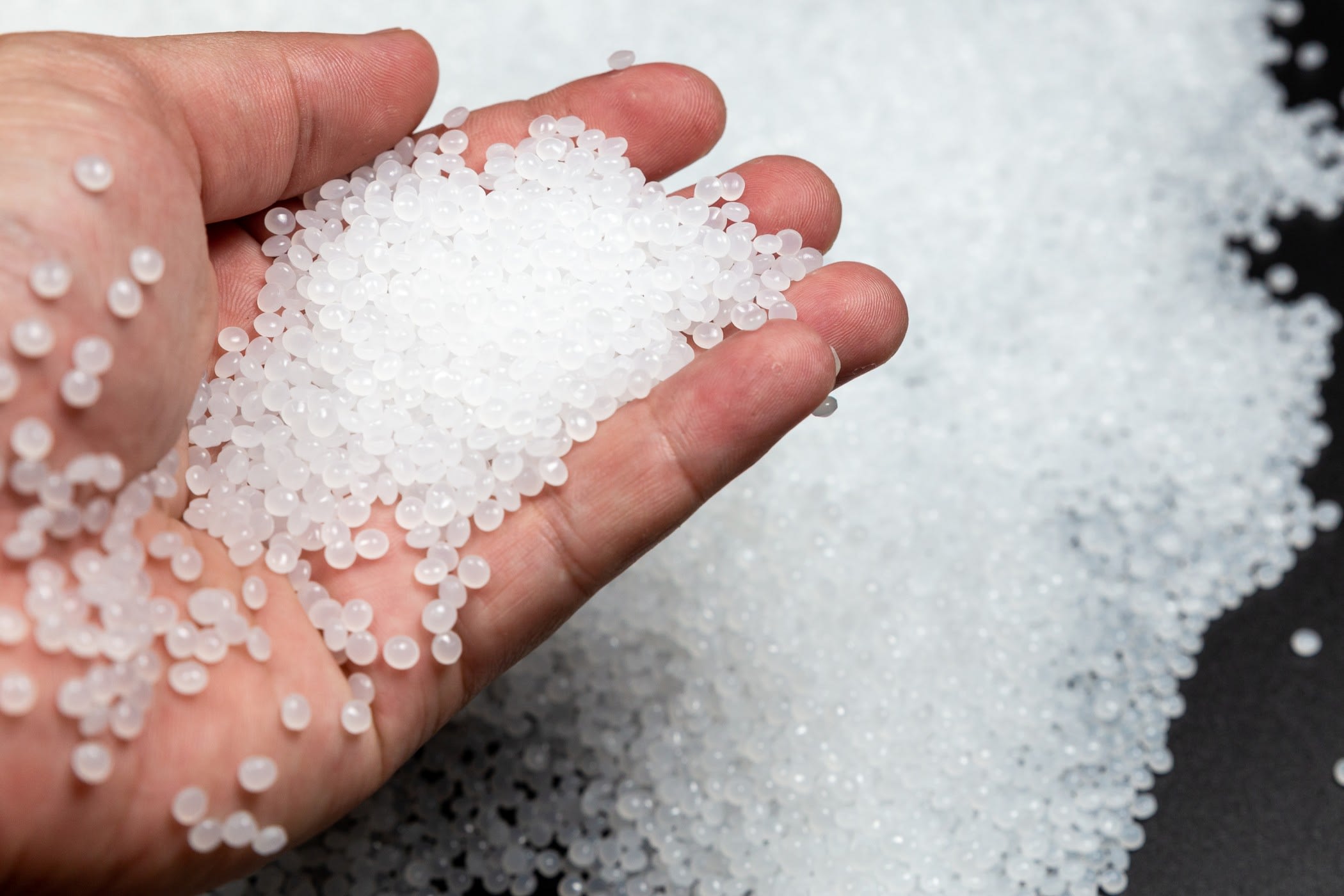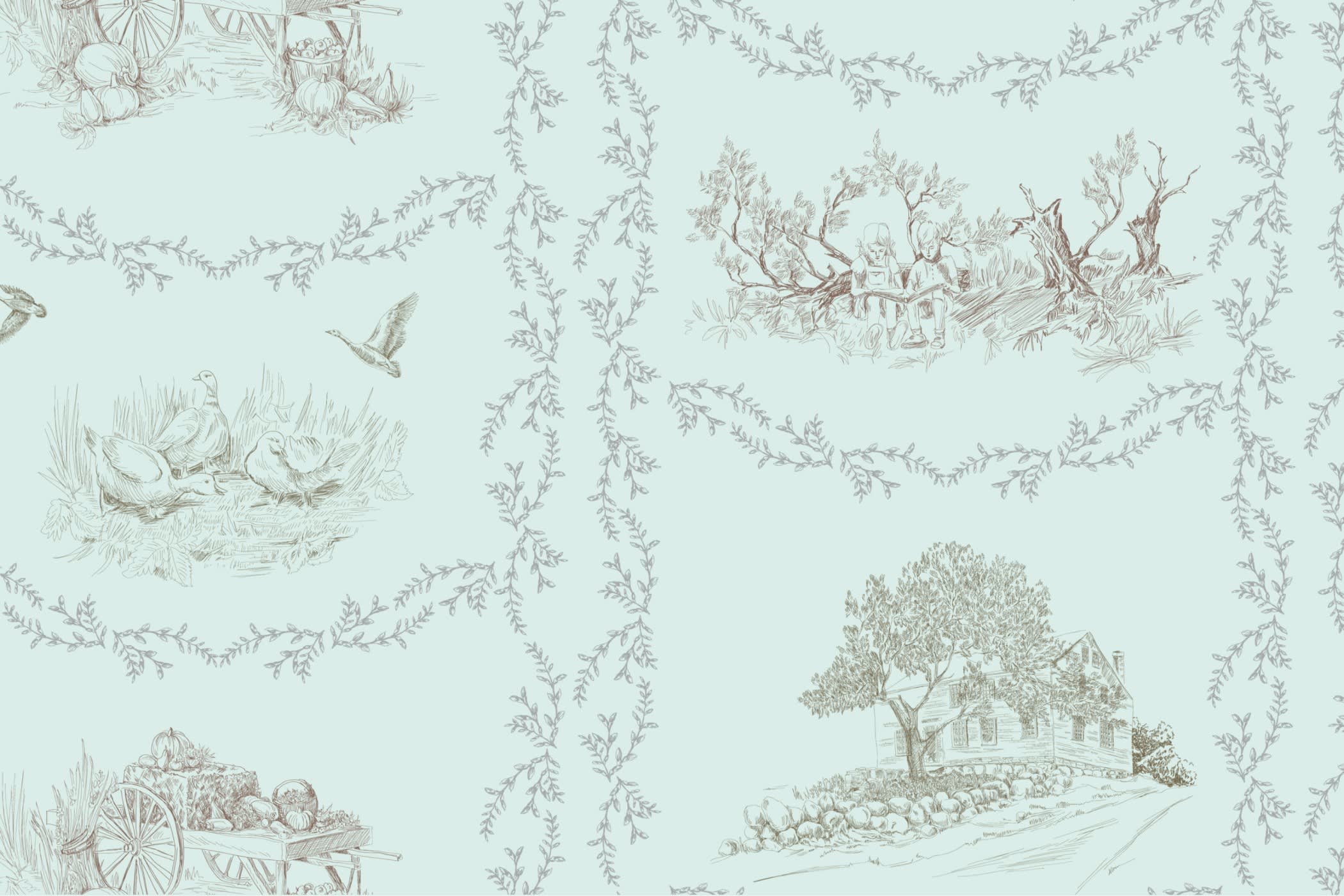Waterproof Vs Water-Resistant Fabric: Know The Difference

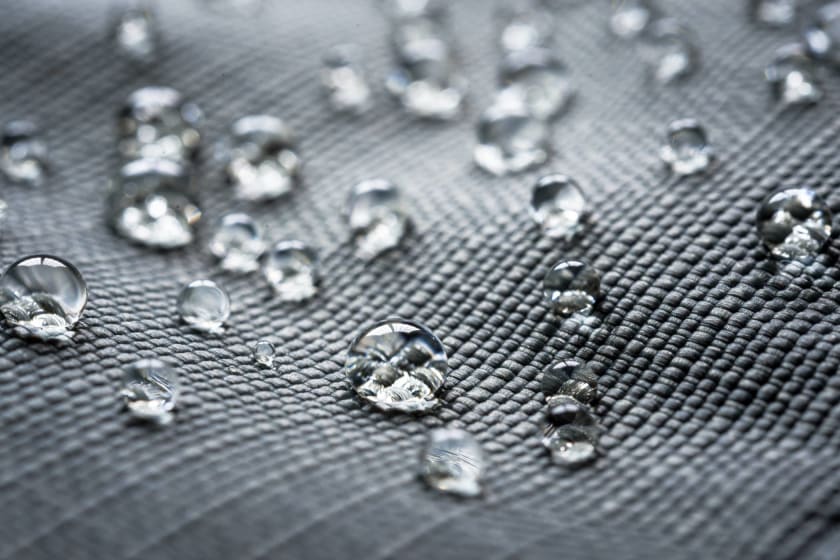

Any clothing manufacturer or designer must understand the type of fabric they are using in their garments, whether jackets, raincoats or any other garment that is waterproof, water-resistant or water-repellant. The cost of one unit of the finished product will depend on the material selected. Therefore, you must know and understand the fabric thoroughly before production.
Broad Differences Between Waterproof, Water-Resistant and Water-Repellent Fabrics
Waterproof
The difference between waterproof, water-resistant and water-repellant fabric is primarily the ability to withstand water from seeping in. A waterproof material, like plastic, provides 100% protection from getting wet. However, waterproof fabrics that are used to manufacture raincoats, jackets, etc., normally use a membrane material so that it is breathable and one does not get sweaty and clammy from inside.
Breathability is crucial for waterproof fabric so that the raincoat or jacket can keep moisture away from the body. Waterproof fabric is used for making umbrellas too, so that not even a single drop can seep in. The outer layer is made of water-repellant material and it is ideal to be used in heavy rain, snowfall or even in underwater sports if you want to remain dry while you are many feet deep under water.
These waterproof fabrics are developed by combining a naturally water-resistant fabric with a durable water-repellent (DWR) fabric. The result is that it will keep the wearer dry outside and sweat-free inside.
Water-Resistant
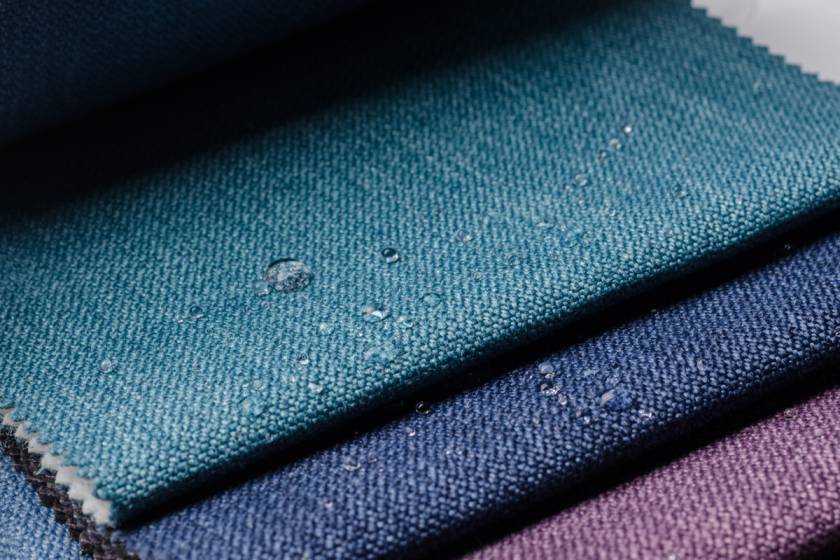
Water-resistant materials provide some amount of resistance from getting wet, however are not 100% waterproof. Synthetic materials like polyester, satin, pongee and nylon have a natural resistance towards water unlike cotton, which absorbs water readily. They provide the lowest amount of protection from rain and sleet.
When a fabric resists water, the tightly woven yarn acts as a barrier between the user and water. It takes some time for the water to seep in, and this material is not at all suitable for making raincoats or waterproof jackets.
Water-resistant material is only suitable for making dresses and shirts that dry up fast. They do not provide any resistance from rain, hailstorm, or sleet. Often, a water-resistant material is coated with a suitable membrane to make it water-repellant.
Water-Repellant
Water-repellent materials provide a medium level of protection from water seepage. Water-repellent fabrics are better than water-resistant fabrics and are also known as “hydrophobic'' materials. Since water forms beads on the outer cover of the fabric and struggles to penetrate the fabric, it is suitable for making bathing suits, scuba diving suits, etc.
Fabrics used for Waterproof Garments
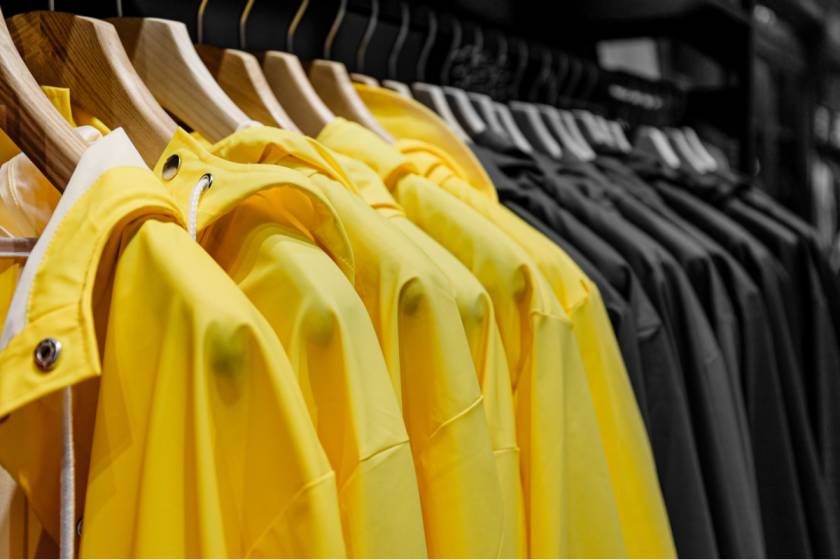
If we go back in history, in 1836, Charles Macintosh invented a method to use rubber with fabric. To date, this material is used in children's oilcloths, popularly known as Mackintosh, so that the mattress doesn't get wet. Raincoats and jackets are made of a synthetic material called vinyl.
In 1851, Bax & Company came up with another invention to use chemically-treated woolen fabric for manufacturing waterproof fabric. It was known as Aquascutum.
Thomas Burberry came up with a new invention for the soldiers of World War I. This all-weather trench coat was made of a yarn-dyed fine twill cotton gabardine which was treated chemically to withstand rain. Even though the garment was made for the soldiers initially, after the war was over in 1918, it became common across Europe and the US.
By 1920, car coats, which are shorter than trench coats, became popular. They used a waterproof fabric created using linseed oil as a layer to protect the cotton and silk underneath. These oil-treated fabrics repel water completely when coated or treated with a rubber layer. The breathability of the material increased the comfort quotient of the user.
After 1940, military research teams in the US dedicated their time and effort to come up with better quality waterproof fabrics. They were lightweight and could be dry-cleaned. Vinyl remained popular through the 1950s for manufacturing raincoats and other water-resistant materials.
In the 1970s, plastic became extremely popular. Since they were inexpensive, the manufacturers used a durable quality of plastic to manufacture lightweight waterproof fabrics. Wool and synthetic became popular choices as blends for waterproof fabrics. Improved chemical treatments and heat-welded seams were new technologies introduced to increase the durability and water-proofing quality of the materials.
Modern-day raincoats use natural and artificial blends, as the focus of the manufacturers is towards affordability and durability. Plastic-coated artificial fibers and microfibers are popular choices of modern-day raincoat manufacturers. Satin, polyester, wool, nylon, wool gabardine, vinyl, and rayon are blended to make them water-resistant and then treated chemically to make them 100% waterproof.
Natural and artificial fabrics are treated with waterproofing materials like resin, pyridinium complexes, melamine complexes, acrylic, polyurethane, fluorine, ethyl siloxanes, silicones (hydrogen methyl siloxanes) or teflon. Paraffin emulsions and salts of metals like aluminum or zirconium too are used to bathe the natural fabrics to make them 100% waterproof.
Fabrics used for Water-Resistant Garments
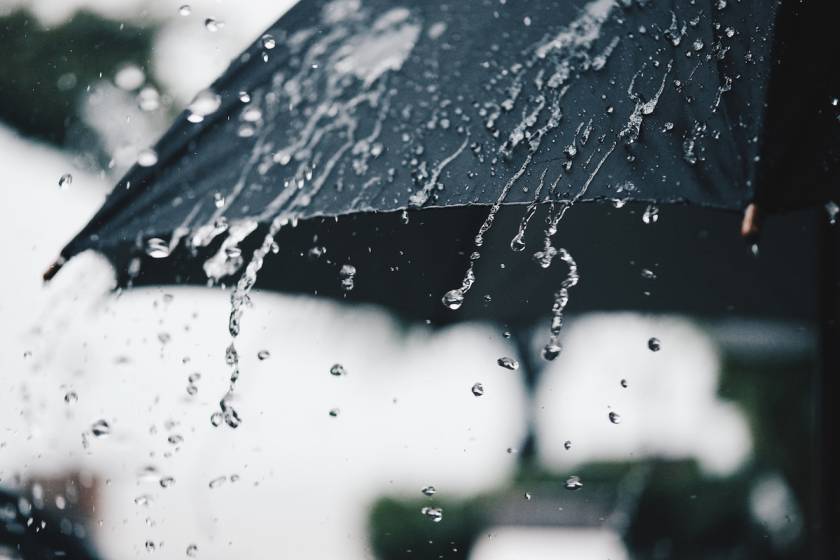
Tightly woven nylon and polyester are water-resistant in nature. They are often coated with a layer of polyurethane to make them water-resistant, and sometimes even waterproof depending on the requirement. They are often used to make umbrellas which are 100% water-proof and jackets that can be worn in rains and hailstorms.
Waxed cotton is made using cotton fabric with a coating of wax. Polyurethane laminate is another polyester fabric that is waterproof and sometimes and also has a water-resistant coating. It is knit or woven along with cotton or polyester yarn and water-resistant material is created.
Thermoplastic polyurethane (TPU) is more environmentally-friendly than Polyurethane Laminate (PUL). They are even used for creating diapers for toddlers and children.
Ripstop nylon fabric was used to make parachutes in World War II. This water-resistant fabric is used to make tents, backpacks, kites, overalls for plumbers and workmen, garden furniture coverings etc. today. Most of them are water-resistant and you can convert them into water-repellent or water-proof materials with the right kind of chemical treatments.
Most of the manufacturers of water-resistant materials have patented their own inventions, and there are new innovations happening in research labs every day.
Fabrics used for Water-Repellant Garments
To understand the fabrics better, it is good to know that the G-1000 Eco material is perfect for making water-resistant garments. Organic cotton and recycled polyester is densely woven and coated with Greenland Wax. Then it becomes water-repellant. This outer coating of Greenland Wax also ensures that the wearer can use the same garment for a long time. The longevity of the garment is another crucial aspect which consumers look for, especially while buying water-repellant garments. Since no one buys these kinds of items on a regular basis, consumers prefer their one-time investment to last for years together.
Conclusion
Fashinza helps fashion brands and independent designers connect with the most brilliant apparel manufacturers. Whether you’re looking for waterproof or water-resistant fabric, we’ll help you find a manufacturer that fits in perfectly. Besides, our complete ownership of the process from delivery to design will allow you to rest assured. Visit us here now!















